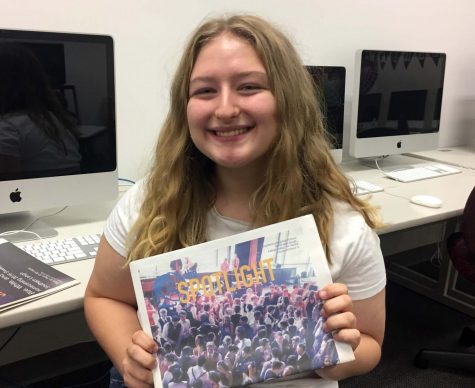Transgender Actors Struggle with Misrepresentation in Today’s Media
While it may see harmless to cast a cisgender person in the role of a transgender person, there are vast repercussions that go unnoticed by many.
According to the Merriam-Webster Dictionary, a cisgender person is someone who identifies as the gender they were assigned at birth, while the same source defines transgender as someone whose gender identity differs from their sex or gender assigned at birth. Given these plain and simple definitions, it’s easy to see that there is a difference between cisgender and transgender people, but many filmmakers don’t place an importance on this difference.
“Transgender actors already don’t get a lot of movie parts, so by a cisgender person taking that role they’re like taking away the one thing a transgender actor can do,” non-binary sophomore Kendall Chenault said.
Many movies throughout the film history have featured cisgender actors in transgender roles. In 2015, Eddie Redmayne played Einar Wegener, the first transgender woman to receive gender reassignment surgery, in the movie “The Danish Girl.” Many praised Redmayne’s bravery for portraying a transgender woman, but these critics failed to recognize the bravery of everyday transgender people, who don’t get to take off a costume and go about their daily lives as Redmayne does. When cisgender people portray transgender characters, the very real struggle of transgender people can get reduced to nothing more than a fictional drama.
The Netflix Original series “Sense8” features a transgender lead, actress Jamie Clayton. The show, created by transgender sisters Lana and Lilly Wachowski, features an accurate portrayal of what it means to be transgender, even going as far as showing Clayton’s character injecting estrogen, a female hormone used by many people transitioning from male to female.
“ I think [casting cisgender people in transgender roles] puts trans people in that negative light. I think it furthers that stereotype of transgender people being crossdressers,” sophomore transgender student Ben Boyer said. “It puts [transgender] people out of work when [filmmakers] rely on cis[gender] actors when there’s plenty of trans[gender] actors willing to fill those roles.”
The Gay and Lesbian Alliance Against Defamation (GLAAD) is a 30-year-old organization that monitors LGBTQ+ representation in media. Out of over 102 TV shows and all movies that have come into theatres for the past 15 years, GLAAD reports that only 12 percent of transgender acting roles have been considered accurate and/or groundbreaking.
This means that consumers of these shows and movies are viewing portrayals of transgender people and their experiences that may be offensive or inaccurate. Cisgender people don’t share the same experiences as transgender people; therefore, they won’t be able to catch inaccuracies in scripts that can depict incorrect or offensive experiences. Misinformation can cause individuals to discriminate against transgender people, view them in a negative light, or, simply, not have the right information regarding transgender issues and experiences.
“I can’t speak deliberately to the math of how that is affecting the employment rate of transgender actors; however, it’s easy to see that the correlation [of unemployment] would be high if cisgender actors are being put into transgender roles,” Gay-Straight Alliance co-advisor Mrs. Lauren Tocci said. “It’s only eliminating further roles for transgender actors.”
The National Center for Transgender Equality released a study in 2011 in which they found the unemployment rate among transgender individuals to be 14 percent. For perspective, the National Conference for State Legislators shows current unemployment rate of the general population to be 4.5 percent.
Casting cisgender actors in transgender roles does nothing to aid this high unemployment rate, and it makes it extremely difficult for transgender actors to break into the field.
“[We need] more [transgender representation]. We should show the public that it’s okay to be transgender and [that] there are transgender people out there,” junior Kara DeWeese said. “Sometimes [transgender people] get a really bad representation and I think if we use mass media to show it’s okay to be transgender it could affect people [positively].”
By choosing to cast transgender actors in transgender roles, they are provided with job opportunities, which helps lower the unemployment rate among transgender people. It is also less likely that a role will be portrayed as offensive or inaccurate, as a transgender person will be able to provide useful feedback on scripts. By not casting transgender actors, filmmakers are doing everyone a disservice.

Senior Sarah Jacobson is a third-year staff reporter, former Our World editor, and current Editor-in-Chief of the Spotlight. She is also the head of social...


